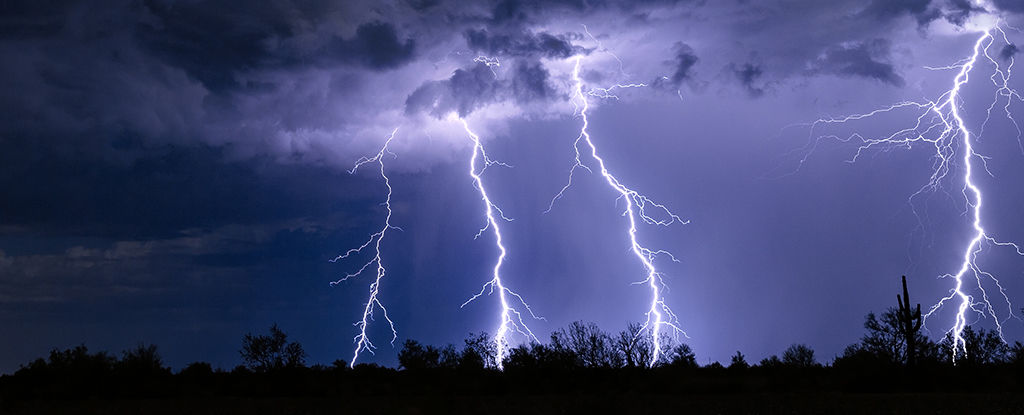
For the first time, scientists have caught lightning in the act of unleashing a powerful burst of gamma radiation known as a terrestrial gamma-ray flash (TGF).

In a world first, Japanese researchers flew a lightning-proof drone in a thunderstorm, using it to induce and direct natural lightning strikes. The team is now working on how this flying lightning rod might capture lightning energy.

New research out of Stanford University adds a “striking” new twist to an existing theory about how life may have began on our planet, involving the occurrence of microlightning in tiny water droplets.

On the night of May 19, 2022, two Chinese astrophotographers, Angel An and Shuchang Dong, captured a spectacular display of over one hundred red sprites over the Himalayas.

Lightning storms on our planet can dislodge particularly high-energy, or "extra-hot" electrons from the inner radiation belt - a region of space enveloped by charged particles that surround Earth like an inner tube.

A powerful laser was able to deflect a lightning bolt almost 200 feet before it hit a lightning rod, greatly improving the rod's function.

A lightning bolt has produced a fascinating type of phosphorus material - a close match for calcium phosphite (CaHPO3). We have never seen this material occur naturally on Earth – minerals similar to it can be found in meteorites and space.

Scientists have found that lightning bolts and, surprisingly, subvisible discharges that cannot be seen by cameras or the naked eye lead chemical reactions breaks down molecules like the greenhouse gas methane.

Lightning strikes were just as important as meteorites in creating the perfect conditions for life to emerge on Earth, according to new research. This shows that life could develop on Earth-like planets through the same mechanism.